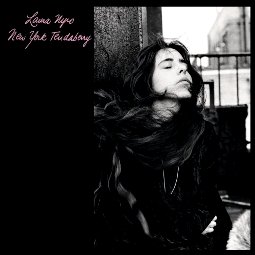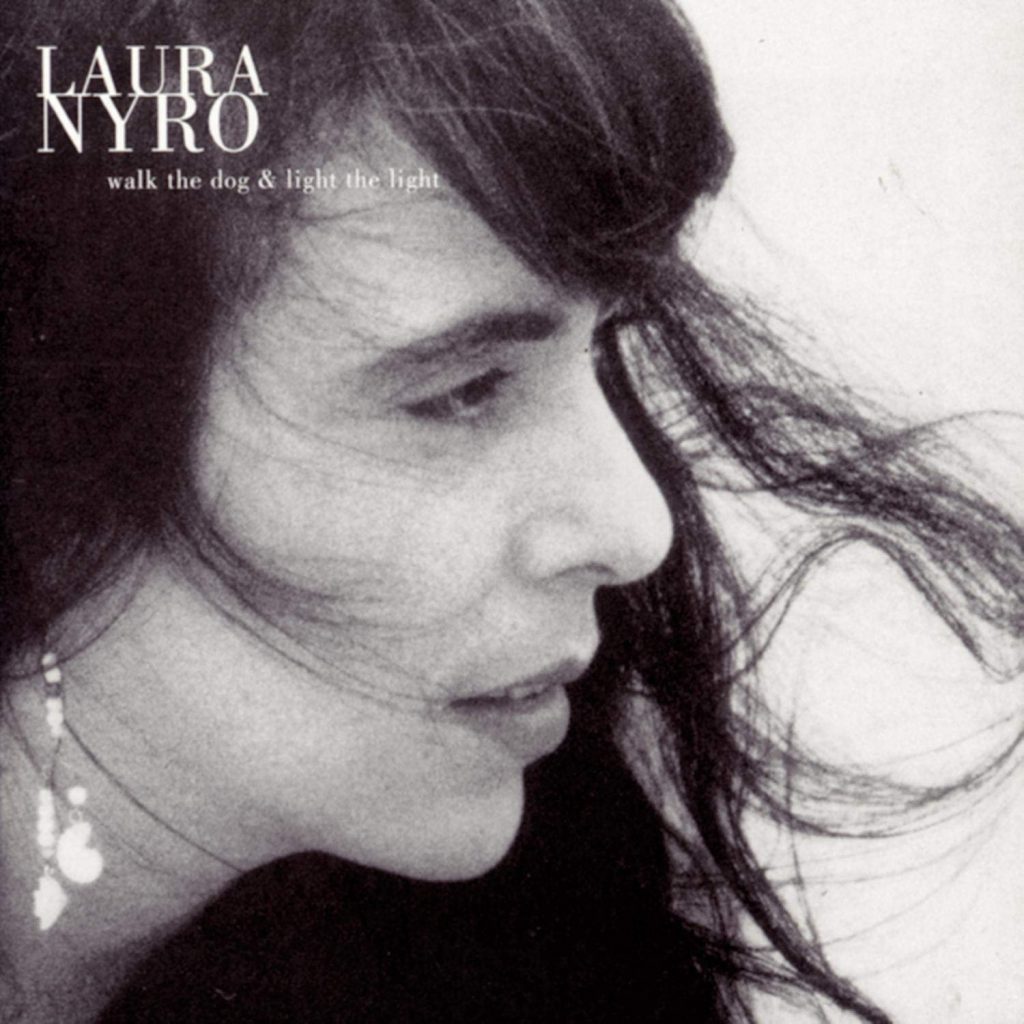A selection of Laura Nyro songs that have meaning to me and have stuck with me through the years, appearing frequently on mix tapes and playlists. Not necessarily stuff you’ll find on an artist’s Greatest Hits collection.
See our other posts in the In Ten Tracks series
Stoney End Laura’s first album More Than a New Discovery (reissued in 1973 as The First Songs) went absolutely nowhere in terms of sales but it became the calling card of this one woman Tin Pan Alley when one performer after another recorded the songs and had top forty hits with them. “Flim-Flam Man,” “And When I Die,” “Wedding Bell Blues,” “Blowing Away” and “Stoney End,” a special song even among this group of songs. Nyro did everything vocally to sell it, her voice strong and defiant against the storm that’s headed her way. When she sings about the thunder that’s come to “match my raging soul” she lets her voice get to that very edge of losing control, flashing her vulnerability before she pulls it back leaving you to wonder if you saw it at all. Most famously covered by Barbara Streisand in 1970 it’s since become a standard covered by hundreds of pop vocal performers. But no one nailed it like Laura Nyro.
Poverty Train Eli & the Thirteenth Confession was released in 1968 and it is difficult to conceive of a more fully realized singer-songwriter album than this collection of songs. There’s not a weak moment, so it’s tough to pick the songs from it that really have been influential to me. This song, a biting blues that turns into a jazzy romp and then an almost celebratory strut. Joe Farrell plays some wispy flute. It demonstrates how adroit Laura was at controlling the dramatic aspects of a song and presenting them in the best possible light. Her well-known style of giving her arrangements an elasticity of tempo and dynamics that is reminiscent of the best moments from Broadway musicals, and it’s no accident that Sarah Bareilles’ early songs often mimic this quality, as Bareilles has since composed for Broadway. Lyrically the song contains a number of stark images and reminds us that Nyro was influenced by more than the echo chamber of popular music, taking in poetry, literature, and visual art as well.
The Confession Nyro took Carole King’s pop songwriting and added a strong dose of the personal, of intimacy. It was a direction King herself was looking toward for her own career as a singer/songwriter, and the work of both Nyro and Joni Mitchell must of convinced her she was on the right path. “The Confession” is a direct celebration of female sexuality and self-determination. “Oh, I hate my winsome lover/Tell him I’ve had others /At my breast/But tell him he held my heart/And only now am I a virgin/I confess” she sings before the concluding words of the album ring out, repeating over a crescendoing orchestra: “Love my love thing/Love is surely gospel.” Love is surely gospel. That’s the message at the center of Laura Nyro’s body of work.
Stoned Soul Picnic—Demo One of Nyro’s best songs, this was made into a hit by the Fifth Dimension, whose version turned it into a pop song and ignored the fact that at its heart “Stoned Soul Picnic” is a spiritual. The album version is well done with strings and horns in the background, but this demo version included on the reissue of Eli and the Thirteenth Confession features only Nyro and her piano as well as her background vocal overdubs that create a ‘vocal group’ backup. We hear the control in her voice as she wordlessly extends a phrase or note, for example when she repeats the word ‘surrey.’ In addition, “Stoned Soul Picnic,” and “Sweet Blindness” unabashedly celebrate Nyro’s enjoyment of intoxicants, be it marijuana or wine. Maybe we don’t know exactly what a Stoned Soul Picnic is, but we know we’d like to be there.
Captain St. Lucifer New York Tendaberry, Nyro’s third album, is seen by many as her best work, but it is a darker album than Eli and its general mood is more brooding. These songs weren’t meant for anyone but Nyro to perform and she did it her way, with only her piano and a drummer accompanied by, at times, an orchestra. New York Tendaberry isn’t everyone’s cup of tea, but it had a strong influence on other performers who, according to Wendy Waldman, wanted to move further in the direction of freedom both as songwriters and singers–and as women.

Up on the Roof Nyro certainly was influenced by Carole King’s work writing songs at the Brill Building and she always wanted to be in a girl singing group. On her 1971 album, Gonna Take a Miracle, she sang some of the great girl group songs with Labelle as her vocal backing group, but she seemingly warmed up for that with this stunning performance of King’s classic song on her album Christmas and the Beads of Sweat. We see her give the Laura Nyro treatment to this well-worn song and understand again how she highlights the polish on certain lines until they shine like jewels in the nighttime city sky. Accompanied by Arif Mardin’s gorgeous arrangement and conducting, it has become my favorite version of this song.
Smile After her first period of retirement Laura returned with the album Smile, a brief but solid statement that moved her sound into a much jazzier direction that began to hint at the prevalent soul stylings of the day. The title track was a gentle embrace, like stepping into a warm pool of water. A paean to the sensual pleasures of deep romantic love and domestic harmony, it contains my favorite Laura Nyro lyric: “World’s insane/paper’s gone mad/But our love is a peace vibe, yes.” Then the song winds down and ends with some koto and echoplexed solo flute. It’s amazing how Laura had stepped back onstage after a significant layoff without missing a beat, her music updated and freshened to reflect music styles of the day without pandering or sounding in any way forced. This performance of “Smile” is from Laura’s live recording Season of Lights, and it features Richard Davis on bass, Andy Newmark on drums, John Tropea on guitar, and some gorgeous saxophone by Jeff King.

Mother’s Spiritual Nyro took another long break following 1978’s Nested, and when she returned with Mother’s Spiritual in 1984 she was even deeper into a mellow vibe that Robert Christgau typically referred to as ‘matrifocal ecofeminism.’ Of major concern to her at this point are the environment and the related tributaries of feminism, animal welfare, human rights, and the kind of political agenda those concerns suggests. The record’s title track is a simple and direct statement of gratitude to the planet delivered in Laura’s signature poetic style. It’s gratifying that from Smile on Nyro doesn’t really change her overall style at all nor revisit the more fiery, quixotic nature of her earlier work. “Each one’s a lover/to this winter night star” she sings, “a pilgrim/a pioneer/That’s who you are.”
Woman of the World Laura Nyro was effectively in retirement following Mothers Spiritual, releasing a live album Live at the Bottom Line in 1989 before she suddenly recorded the collection of songs that were released as Walk the Dog and Light the Light in 1997. The album finds Nyro well settled in her role as a domestic goddess who writes and sings songs people sometimes seem to like. The second half of her career has an ease to it, as though Nyro was finally comfortable in her own skin, and certainly her acceptance of herself in living in a committed lesbian relationship had some bearing on this. This final album sounds confident but also breezy and open. Produced by Steely Dan producer Gary Katz, it features flexible studio musicians who give a lot of depth to the songs, suggesting that they were happy with Nyro’s laid-back recording sessions. Bernard Purdie, Lou Marini and guitarist Elliot Randall (who played the guitar solos on “Reeling In the Years”) support Nyro’s smoky, experienced vocals.
Walk the Dog and Light the Light Laura Nyro’s final album features politically motivated songs again, including “Lite a Flame (The Animal Rights Song),” “Broken Rainbow” (about the plight of Native Americans) and “Louise’s Church.” But it’s the title track, a paean to life on the road while living a domestic lifestyle that really hits home. It hints at a different style, her bouncy piano work emphasizing a more guitar-based sound for the song that evokes the thoughts of home and hearth that arise while Nyro travels on overnight trips to play regional venues. It’s like a little prayer that finds comfort in certain rituals and prayers to keep everyone safe and sound until Nyro arrives home: “I’m heading for the city lights/walk the dog and light the lights/I’ll see you on Sunday ’cause I’m working on Saturday night.”
